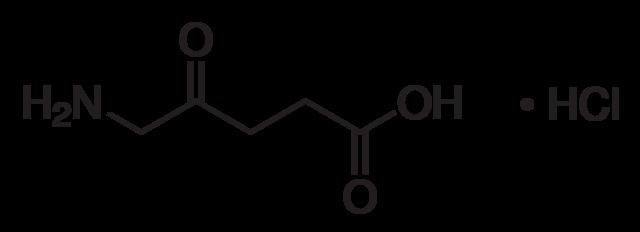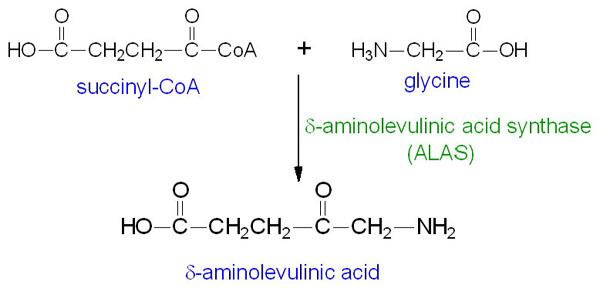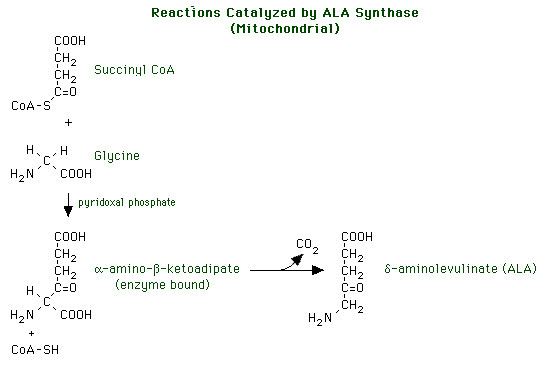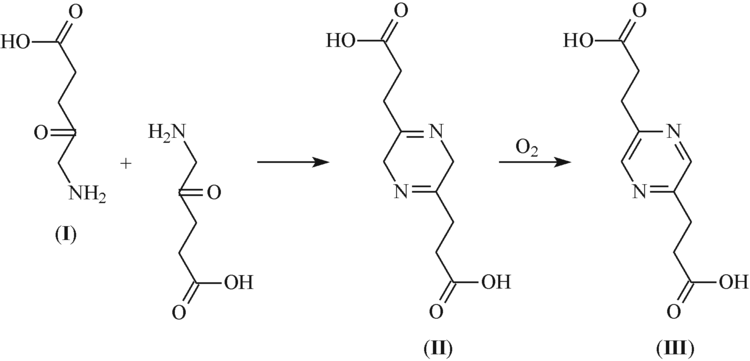Pregnancycategory C CAS Number 106-60-5 IUPHAR/BPS 4784 Formula C5H9NO3 | ATC code L01XD04 (WHO) PubChem CID 137 Molar mass 131.1299 g/mol CAS ID 106-60-5 | |
 | ||
Legal status In general: ℞ (Prescription only) | ||
δ-Aminolevulinic acid (dALA or δ-ALA or 5ala or 5-aminolevulinic acid ) is the first compound in the porphyrin synthesis pathway, the pathway that leads to heme in mammals and chlorophyll in plants.
Contents
- 5 ala 5 aminolevulinic acid
- Biosynthesis
- Clinical significance
- Cancer diagnosis
- Cancer treatment with PDT
- Fluorescence guided surgery eg for cancer
- References

In plants, production of δ-ALA is the step on which the speed of synthesis of chlorophyll is regulated. Plants that are fed by external δ-ALA accumulate toxic amounts of chlorophyll precursor, protochlorophyllide, indicating that the synthesis of this intermediate is not suppressed anywhere downwards in the chain of reaction. Protochlorophyllide is a strong photosensitizer in plants.

5 ala 5 aminolevulinic acid
Biosynthesis

In non-photosynthetic eukaryotes such as animals, insects, fungi, and protozoa, as well as the Alphaproteobacteria class of bacteria, it is produced by the enzyme ALA synthase, from glycine and succinyl CoA. This reaction is known as the Shemin pathway, which occurs in mitochondria.

In plants, algae, bacteria (except for the α-proteobacteria group) and archaea, it is produced from glutamic acid via glutamyl-tRNA and glutamate-1-semialdehyde. The enzymes involved in this pathway are glutamyl-tRNA synthetase, glutamyl-tRNA reductase, and glutamate-1-semialdehyde 2,1-aminomutase. This pathway is known as the C5 or Beale pathway. In most plastid-containing species, glutamyl-tRNA is encoded by a plastid gene, and the transcription, as well as the following steps of C5 pathway, take place in plastids.
Clinical significance
Being a precursor of photosensitizer, aminolevulinic acid is also a used as an agent for photodynamic therapy.
Cancer diagnosis

Photodynamic detection is the use of photosensitive drugs with a light source of the right wavelength for the detection of cancer, using fluorescence of the drug.
5-Aminolevulinic acid, or derivatives thereof, can be used to visualize bladder cancer by fluorescence imaging.
Cancer treatment with PDT

Photodynamic therapy (PDT) treatment possibilities include those for cancer of the prostate, breast, giant BCC (skin), cervix, recurrent bladder, vulvar, brain (human glioblastoma cells), HPV, lung, stomach, head and neck, penis, and colon, as well as those for leukemia, Barrett's esophagus, squamous cell carcinoma (SCC), Bowen's disease, and other types of cancer.
Fluorescence-guided surgery (eg for cancer)
It elicits synthesis and accumulation of fluorescent porphyrins (protoporphyrin IX) in epithelia and neoplastic tissues, among them malignant gliomas. It is used to visualise tumorous tissue in neurosurgical procedures. Studies have shown that the intraoperative use of this guiding method may reduce the tumour residual volume and prolong progression-free survival in patients suffering from this disease.
